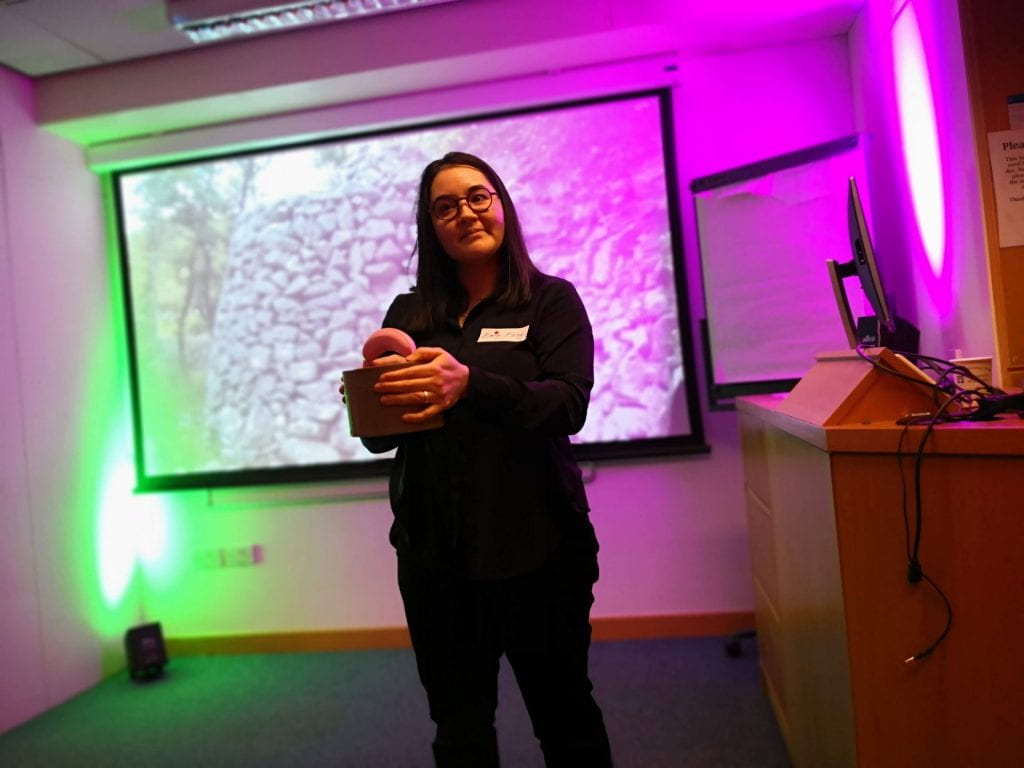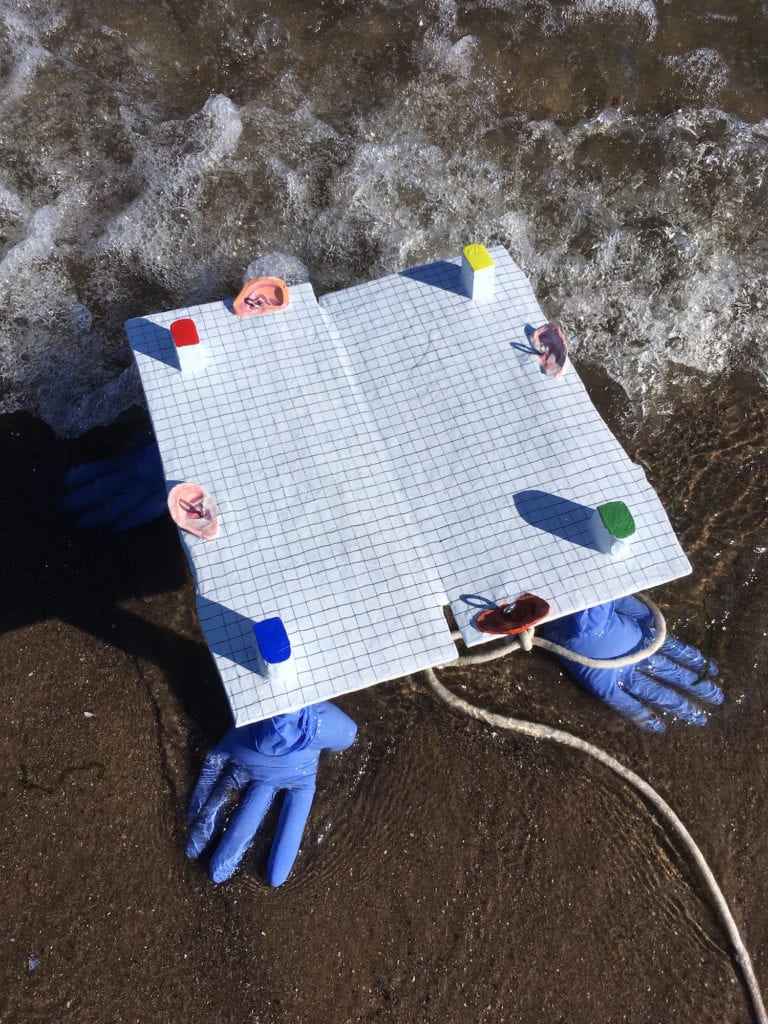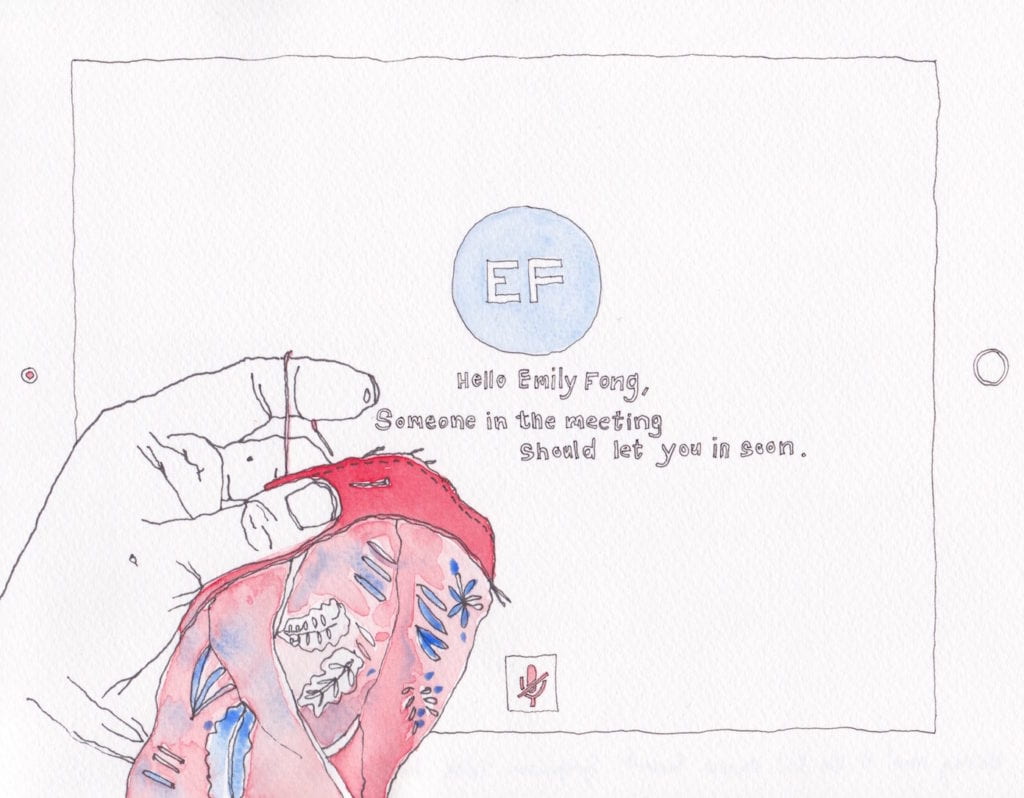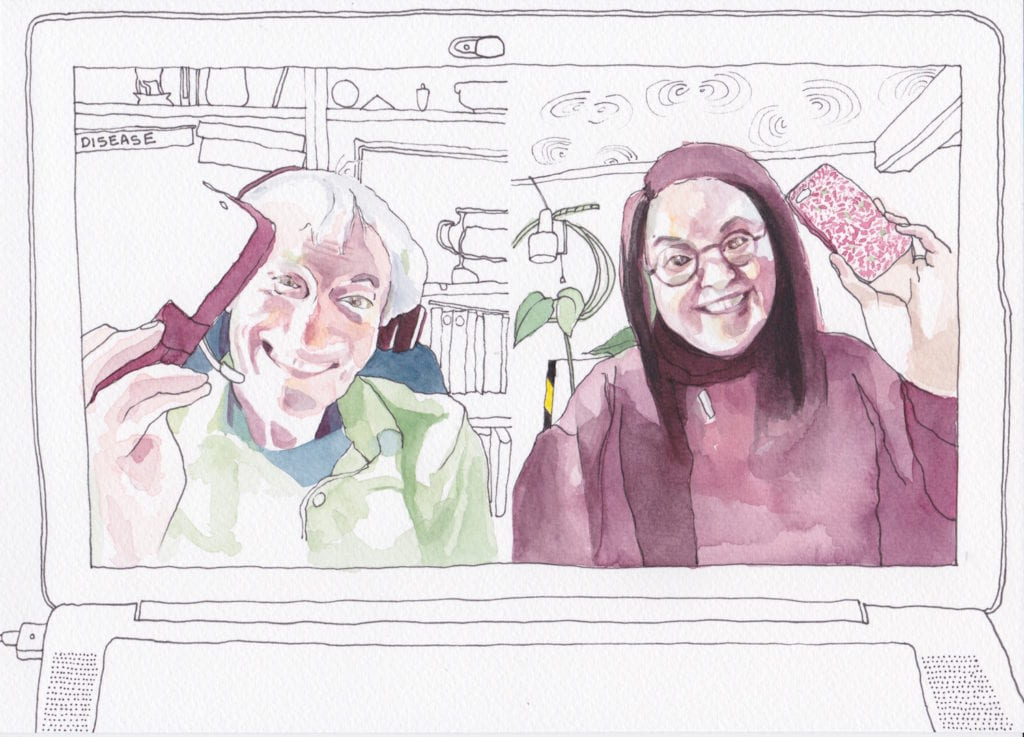Science meets art in creative ways with a new remote residency project in Life Sciences. Ali Floyd from the School of Life Sciences tells us more.
Since our establishment in 2017, the Wellcome Centre for Anti-Infectives Research (WCAIR) has run a busy, productive science art collaboration with LifeSpace. We have run a co-commission with NEoN Festival, created new exhibitions in the space, and sent work touring. Of course, in 2020 our programme simply could not continue as before – but we had suspicions that the benefits of science art would be even more essential now than in ‘normal’ times.
With this in mind, we have been working with colleagues at Duncan of Jordanstone College of Art and Design to explore how we might make a remote residency happen. Could it be even more illuminating than a ‘normal’ residency?

In February, before the scale of what was about to happen had become clear, we had the great pleasure of meeting the incomparable Emily Fong. Emily is an artist exploring life and death, embodiment and emotion; the experience of existing in a human container. Her artistic practice is underpinned by the observation and communication of the life cycles of living things; growth, mortality and change from the micro to the macro. Through the mediums of drawing, painting, sculpture and writing, she seeks to highlight our similarities not only to one another but also to other species that occupy this planet. What are we made of? How are we structurally and emotionally connected beneath the skin? Her intuition is that, by going deep inside life, turning it inside out, she might discover new ways of observing and re-configuring the outside.

She’s also a delightful human being, with a charm and energy all her own. We were very interested in the idea of a residency, with Emily coming into our labs and being a part of the team. However, how do you do a residency when no one is resident?

Emily has been working from her studio to get inside what WCAIR is. We knew it wouldn’t be easy. What it has been, so far, is very different – and fascinating. Instead of meetings at work, Emily has had a camera straight into their homes. As we all feel the effects of months away from the routines we know, will people be open to non-routine conversations?

We’ve been looking at how to show Emily’s work off, in the absence of a gallery space, deciding to play with our website structure and create a series of blog posts on the WCAIR website. You can also find out much more on Emily’s website and her Instagram.
